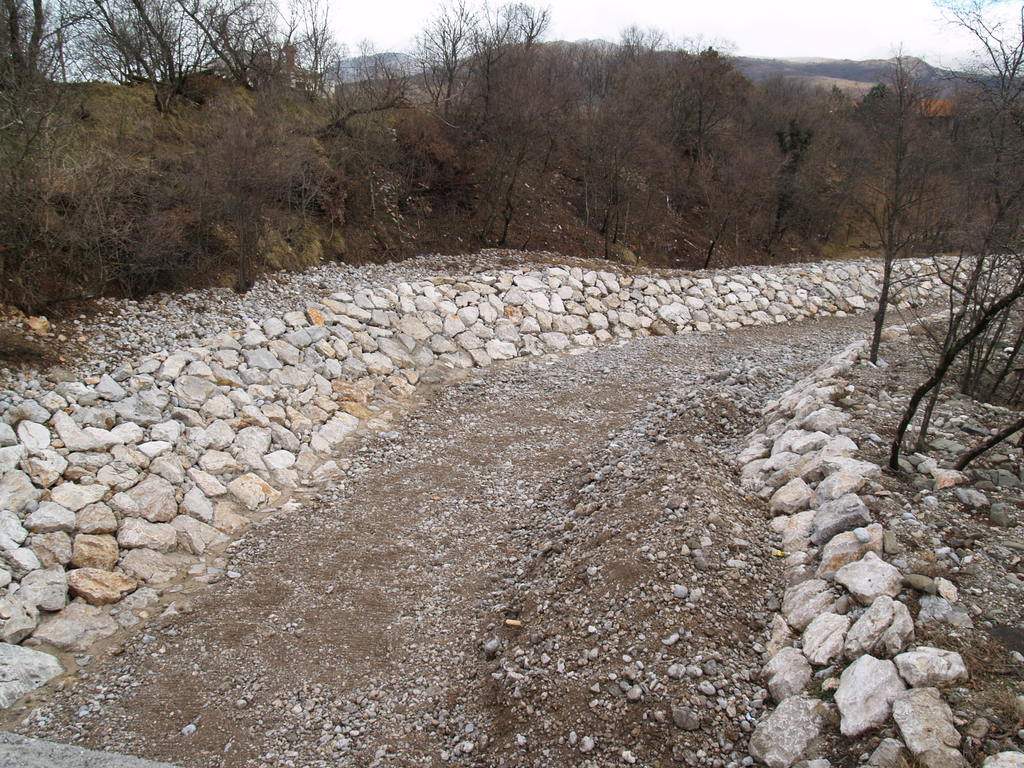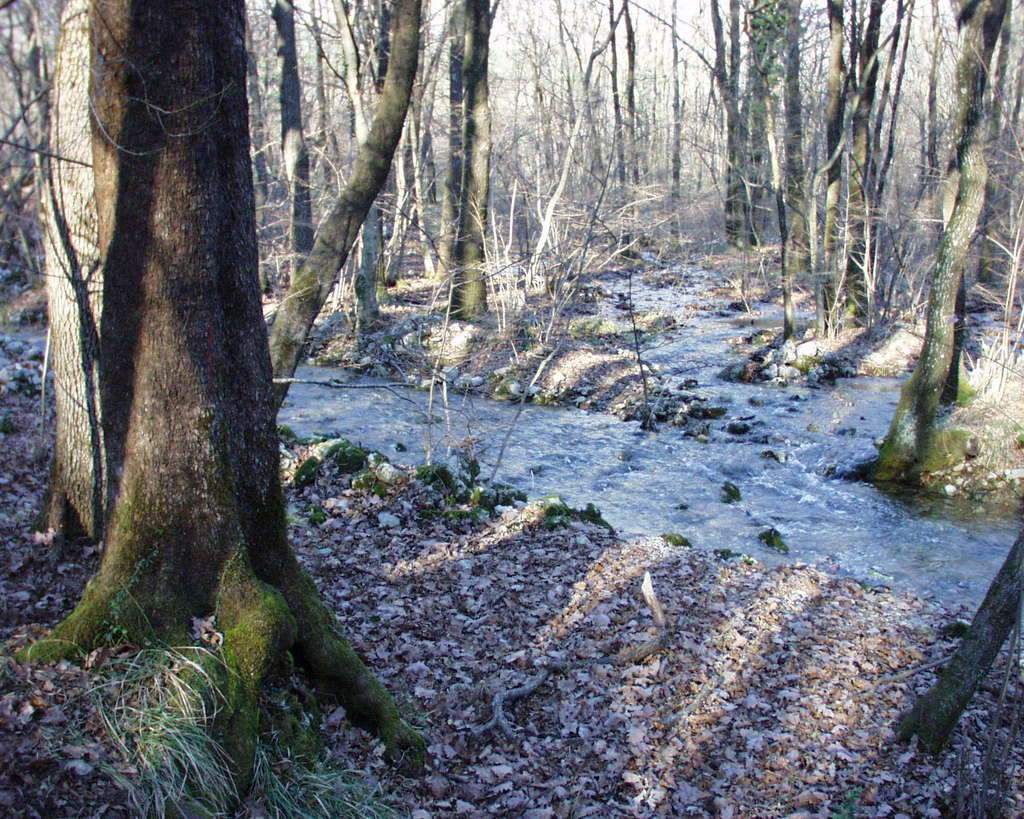A fairly large number of torrent tributaries flow into the Rječina River, as do the runlets of numerous springs found near the river bed. Combined, they contribute significantly to the power of the Rječina River during heavy rainfall and snowmelt in the mountains (Photo 1). The springs alongside the river also ensure there is always some water in the riverbed, even when Zvir, the main spring, dries up.
Photo 1. The swollen Rječina River at Žakaljski cascade (Photo by M. Randić)
Most of the largest torrents empty into the left bank of the river. These are the Zala, Rastončica, Borivišćica, Mudna and Kacaj, which join to make the main torrent Sušica that flows into the Rječina River at the small town of Lukeži. The other, smaller torrents flow separately into the river.
For most of the year, the beds of these torrents are dry and filled with a multitude of shoals, largely made up of pebbles transported from upstream areas. Interestingly, pebbles from several different types of rock can be found on the bed of the Sušica torrent. The whitish pebbles of limestone and the greenish-grey pebbles of flysh sandstone stand out in particular for their contrasting colours. The latter probably come from the Zala torrent which emanates in the region of Klana and, in part, flows over terrain with a flysh substrate, breaking off pieces of flysh rock and rolling them down to the bed of the Sušica torrent. Even rarer are pebbles of dolomite rock; these are, in all likelihood, carried down by the Borovišćica torrent (Photo 3) that has carved its way through dolomite slopes.
Dolomite pebbles are more often found upstream because dolomite rock erodes easily and is almost always ground into fine sand by the downstream force of the torrents. Torrent shoals are particular habitats with special types of plant communities that are hard to find nowadays; especially wide-spread are shrub-like types of rosemary willow. We are making efforts to raise awareness of the need to provide protection to these habitats as areas of special natural value.

PHOTO 3. VERY LARGE PIECES OF BROKEN ROCK, FOUND ON THE BED OF BOROVIŠČICA TORRENT, TESTIFY TO THE POWER OF TORRENTIAL WATER (PHOTO BY M. RANDIĆ).
In the uppermost part of the catchment area in the Grobnik mountains, where most of the torrents originate, another special type of intermittently wet habitat has developed. This habitat comprises the beds of torrent gullies and ravines that drain torrent flows. At present, such habitats are much better preserved in the upper parts of the catchment area because torrent control is largely carried out in lower areas, resulting in the loss of most of the natural value of such habitats (Photo 4).

PHOTO 4. STONE REVETMENT NARROWS THE BED OF THE SUŠICA TORRENT AT THE BRIDGE AT PODKILAVAC (PHOTO BY M. RANDIĆ)
For a short period of the year, these distinctive highland habitats are very wet as the snow, which has accumulated in them during the winter, slowly melts. During the arid part of the year, the beds of the gullies and ravines are deprived of water and moisture due to drainage. Water from rainfall is also quickly drained, leaving the beds dry. The diametrically opposed conditions of these habitats, with alternating wet and dry phases, make it possible for special communities of plant and animal species, adapted to such conditions, to emerge and develop.
M. R.





